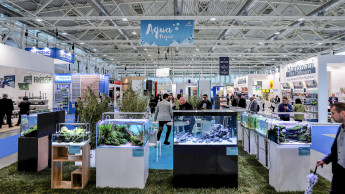

The big reefs off Mexico are home to many species of ornamental fish, offering great potential for aquarium keeping. The hobby has now become an important sector of the economy in Mexico, although it suffers repeated setbacks.
The first aquariums as decorative objects were to be found in the living rooms of Mexicans around 1930. It was only in the 1950s, however, that the beginnings of aquatics as an organised sector of the Mexican economy emerged. The process of modernisation began to take off especially after the Second World War thanks to new international airports, and the new infrastructure close to the big centres of trade and production. These circumstances made it possible to send fish to destinations all over the world within 24 to 48 hours. As aquarium technology and knowledge of the needs of the fish improved over time, demand continued to increase. Even the major national economic crisis of 1992 failed to halt this increase. Today Mexico is the largest handling location for ornamental fish in Latin America and is responsible for the creation of more than 40 million directly related jobs. All the companies and activities associated with the aquarium industry also bring in annual tax revenues of $ 150 millions. “The aquarium industry in Mexico is an economic activity of immense importance, as the growth in producers and sellers is overtaking the growth rate of many activities in the country,” explains Dr Carlos Ramirez of the University of Nuevo Leon. “It’s not just about brightly coloured fish, but about an industry that creates jobs and currency.” Decline in price and bad advice The enormous significance of aquatics is also clear from the Internet portal www.acuariofilia.org. There nearly 700 companies, speciality retailers and wholesalers working in this branch of the economy in Mexico are registered. But in spite of the huge enthusiasm for aquariums and the great potential that the Mexican aquatics industry offers, it suffers repeated setbacks. Acuarex, for ten years one of the biggest importers of ornamental fish in the country, is a clear example that this sector of the economy is not growing as much as it could. There are several reasons for this. Enrique Luis Rodolfo Gutierrez Quintero, proprietor of Acuarex, stresses that the aquatics trade has been subject to fierce competition for quite a while. The resulting sharp drop in the price of ornamental fish and accessories is not only a consequence of the strong competition in the national market, however, but also of the global recession. “People are simply spending less on their hobby,” says Quintero. “And anyone who opts nevertheless for fishkeeping as a hobby is put off by poor quality of the accessories or by…
Related articles
Read also

 Menü
Menü






 11-12/2011
11-12/2011












 Newsletter
Newsletter